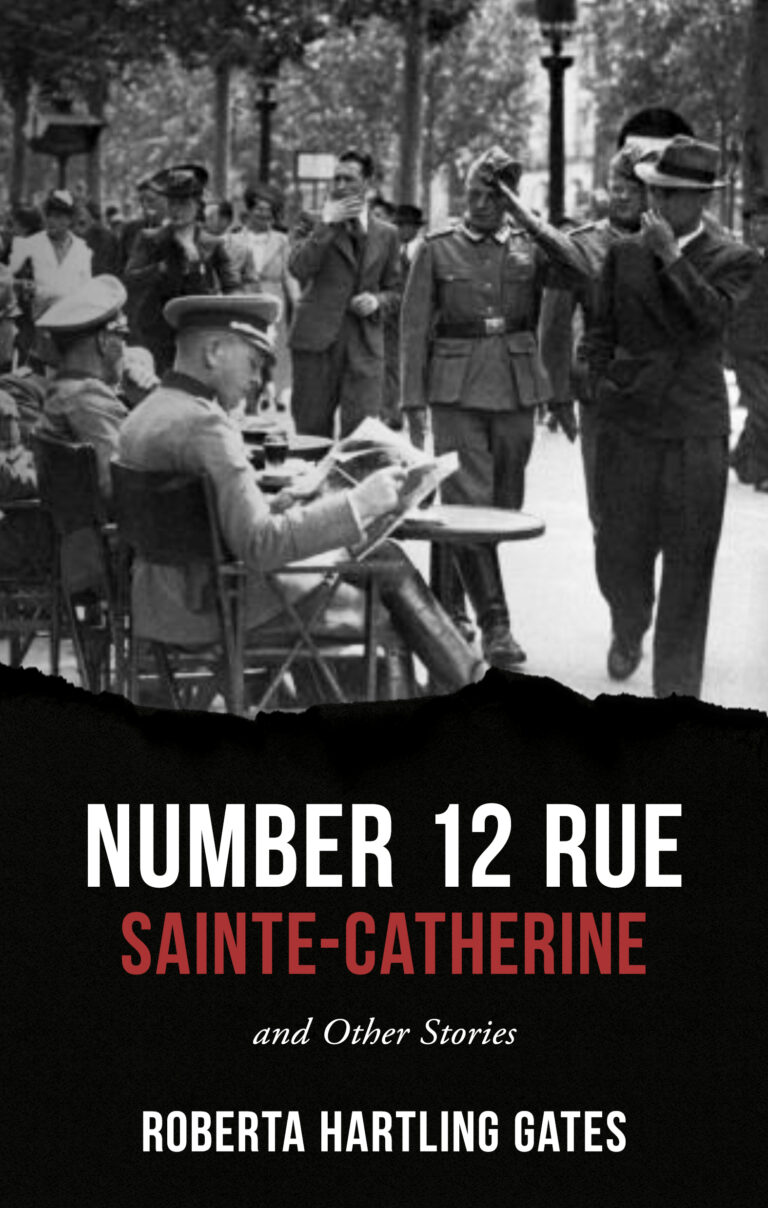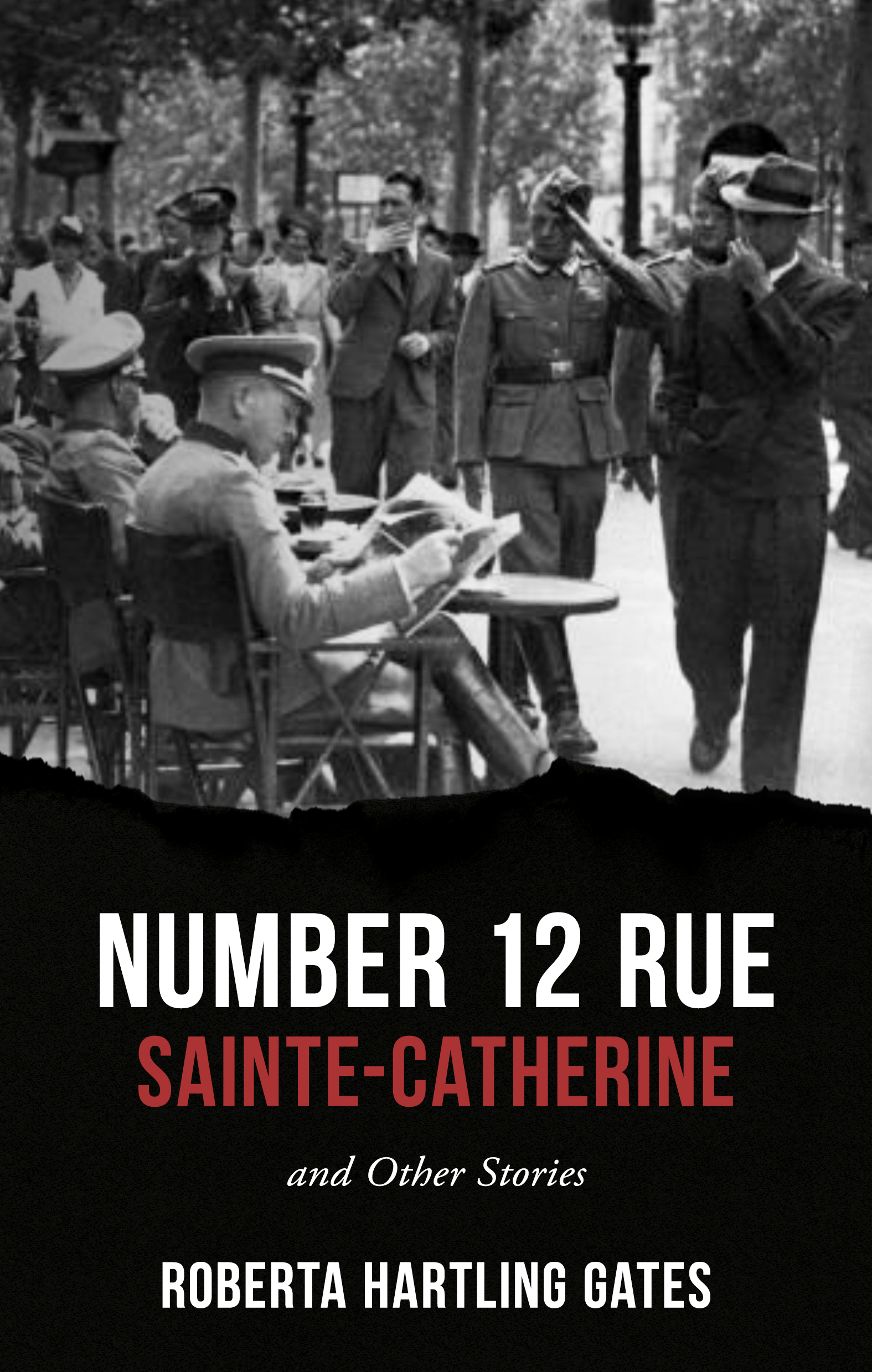In NUMBER 12 RUE SAINTE-CATHERINE, Roberta Hartling Gates examines the life and times of Klaus Barbie, the notorious Gestapo Chief who terrorized Lyon, France at the height of World War II. Over the course of nine well-crafted short stories, Gates dives into the seductive allure of power, the corruption it invites, and the lasting damage it inflicts. From Barbie’s troubled childhood to his post-war escape and long-delayed legal reckoning, Gates paints a rather chilling portrait of an unremarkable man’s transformation into the infamous “Butcher of Lyon.”
The collection opens in 1920s Germany with “Mama’s Boy,” where readers learn that Barbie was “cursed with a father who was omnipresent.” Gates then outlines the early influences that shaped Barbie into the man he would become, tracing his abusive upbringing in the 1920s to his indoctrination into Nazism. From there, Gates thoroughly explores his ascent to Gestapo chief in Lyon, where he unleashed a ruthless campaign of terror, exemplified by the chilling 1943 raid on a Jewish welfare office (as outlined in “Number 12 Rue Sainte-Catherine”).
Through her use of vivid, often arresting prose, Gates brings Barbie’s victims and what they experienced to life. Particularly gut-wrenching is the story of Resistance leader Jean Moulin, who endured brutal torture at Barbie’s hands before succumbing to his injuries: “By that time, though, he was in the hands of that monster Klaus Barbie. They say it was Barbie himself who beat him to death, and I wouldn’t doubt it. Barbie was vicious, and he must have had some idea how important Moulin was. But Moulin had been tortured before. If he hadn’t given in then, he wasn’t going to give in to le boucher de Lyon.”
NUMBER 12 RUE SAINTE-CATHERINE also delves into Barbie’s post-war escape to Bolivia, where he lived comfortably under an assumed name until his long-delayed extradition and trial in France in the 1980s. While many of these stories focus on Barbie’s self-serving rationalizations, Gates also brings additional characters into the fold. For instance, the final story in this collection follows a middle-aged journalist who discovers the shocking truth about his mother’s wartime association with Klaus Barbie. The sudden identity crisis that follows is a fitting conclusion that illustrates the far-reaching and long-lasting impact of Barbie’s crimes.
While it’s impossible to know what Barbie was really thinking, Gates successfully offers some compelling hypothetical glimpses. “The Man Who Wore Violets,” for instance, provides insight into Klaus Barbie’s inner thoughts as he interrogates a female prisoner: “Klaus, caught off guard by the deftness of her strategy, barked out a laugh…Men were always saying what a mystery women were, but mostly they weren’t. Marianne, though, was different…She reminded him of a child clamoring to be picked up, but then wriggling to get away.”
Ultimately, NUMBER 12 RUE SAINTE-CATHERINE is a haunting and thought-provoking work that challenges readers to confront the darkest chapters of human history. At just over two hundred pages, this is a relatively quick read; but the concise nature of these tales feels appropriate, especially given the grim subject matter. Regardless, stories like these must be remembered. For that reason alone, NUMBER 12 RUE SAINTE-CATHERINE makes for an essential addition to any reader’s shelf.
NUMBER 12 RUE SAINTE-CATHERINE, by Roberta Hartling Gates, is an impressive debut examining the life and times of a notorious Gestapo chief from his troubled childhood in Germany to his eventual arrest and trial decades later. Historical fiction at its finest.
~James Weiskittel for IndieReader


